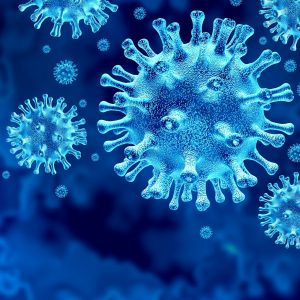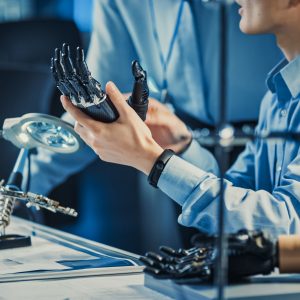This two-part blog series examines the reimagined role of a patient in the new era of healthcare. Patients of today are both empowered and overwhelmed by the enormity of the available data and information as well as the weight of decisions and responsibility they are often required to take on when it comes to their own wellbeing and healthcare in order to ensure the best outcomes, the meaning of which they are also redefining for themselves and their healthcare providers.
COVID-19 as a Catalyst for Innovation
Knowledge is power, especially when it comes to health. Health, and even more so the absence of health, is a deeply personal experience. The ever-increasing technological advances are further empowering patients to have more control of their own health and wellbeing, as well as to seek deeper partnerships with their healthcare providers to achieve better clinical outcomes.
A year ago, I outlined technology trends and digital health predictions for 2020. This was months before we knew about COVID-19 and the  global pandemic that will encircle the world. Yet, seven out of eight predictions have been accelerated or took on even more importance due to the COVID-19 pandemic. From disease prevention to AI for early diagnostics to connected health to digitizing clinical trials, all these trends have intensified. Even 3D printing became a vital tool in the fight against COVID-19. One thing is clear: the setbacks brought on by the global coronavirus pandemic have also created multiple opportunities for development of novel technological solutions to the current crisis. And it also has a potential to turn the challenges with the healthcare system into an opportunity for more patient-empowered care.
global pandemic that will encircle the world. Yet, seven out of eight predictions have been accelerated or took on even more importance due to the COVID-19 pandemic. From disease prevention to AI for early diagnostics to connected health to digitizing clinical trials, all these trends have intensified. Even 3D printing became a vital tool in the fight against COVID-19. One thing is clear: the setbacks brought on by the global coronavirus pandemic have also created multiple opportunities for development of novel technological solutions to the current crisis. And it also has a potential to turn the challenges with the healthcare system into an opportunity for more patient-empowered care.
Internet of Medical Things (IoMT)
The Internet of Medical Things (IoMT) is a healthcare-specific subset of the Internet of Things (IoT). This massive network is poised to include billions of low-bit rate and low-energy connected health monitoring devices, remote sensors, and clinical wearables, with 5G providing a backbone infrastructure for IoT. Doctors already rely on these devices to collect and electronically transmit their patients’ data. The data is received in real time, allowing healthcare providers to efficiently analyse it, derive insights, and administer or adjust treatments. On the diagnostics and prevention side, this data will also allow doctors to increase the accuracy of their diagnoses and therefore effectiveness of treatments.
Connected Health
Connected Health has been one of the enabling technologies for more integrated care, better-informed health and wellness decision making

and improved access to quality healthcare. Connected Health is a broad, umbrella term encompassing a collection of technologies (sensors, devices, intelligent communications and data sharing) and the processes and workflows that connect them together and make the whole system work.
Intelligently combined into a Connected Health ecosystem, these capabilities aim to deliver actionable insights in order to improve patient outcomes by enabling self-care and remote care, potentially flexibly combined to empower individual patients and to achieve specific health goals for a given patient population, disease area or care setting.
Read more: Connected Health Care and the Internet of Medical Things (IoMT).
Remote Patient Monitoring
With high risks of exposure to the coronavirus during the COVID-19 pandemic, many hospitals and doctors’ offices were mandated to close for months, and as a result, regular healthcare has been disrupted for millions of people. Here too, technology can come to the rescue for some conditions. Wearables and other sensor-enabled devices allow patients to track their vitals and overall health data, then share results with the healthcare provider without physically going to the doctor’s office.
Other enabling technologies for virtual care, such as telemedicine, have also been widely adopted during this global pandemic. Telemonitoring, possible through wearable devices, is critical for patients, especially those with chronic diseases and other underlying conditions. Wearables allow patients access to their health data quickly, giving them, their caregivers and physicians insight into health “ground truth” status, so patients can better take care of themselves. Increasing use of wearable sensors will further empower patients to gain deeper insights into their health and wellbeing, allowing for a shift from Big Data to more individually actionable Small Data.
Wearables for Early Disease Detection
Wearable medical devices are changing the medical technology landscape, a growing trend that has been further accelerated by the global coronavirus pandemic. In less than a year, COVID-19 has altered our individual and collective behaviour, changing both healthcare and workplaces. Technology offers tools to meet these new challenges.
New research shows promise in wearables’ ability to detect early coronavirus symptoms. Back in 2017, research from Stanford Medicine

demonstrated that health data collected from wearables can help detect infectious illness days before any noticeable symptoms emerge. Recently, Stanford Medicine researchers, in collaboration with Fitbit and Scripps Research, have launched a new effort aiming to detect early signs of viral infection through data from smartwatches and other wearable devices. Another promising 2020 research study showed that Oura ring can predict COVID-19 symptoms three days before the onset with more than 90% accuracy.
Read more: The Rise of Wearables and Their Role During COVID-19.
Improving the Patient Experience
COVID-19 is further accelerating shifts in healthcare that started even before the pandemic. Patient-centered and patient-empowered care has been increasingly gaining traction. Patients, their caregivers and families are looking for sustainable solutions to chronic disease management that are more cost effective and better fit their busy lives.
The increasing trend of consumerization of healthcare resulted in patients expecting personalization from all their devices and applications, including health-focused ones. But to achieve wider and long-lasting adoption, these devices and apps need to be designed and developed with the user in mind. Requirement to effortlessly fit into the daily life would affect design decisions about the size, durability, battery capacity and many other considerations. For example, wearables need to be comfortable even with prolonged use. When it comes to operating the device, being intuitive and easy to use is important to the success of the wearable, and especially vital in health applications.
Many technologies are well positioned to become vital tools in helping to monitor people’s health, detect early signs of illness, empower patients and give medical providers a glimpse into their patients’ health-affecting habits and lifestyle outside of the doctor’s office. In addition to the advances described in this article, other technologies, including Digital Therapeutics (DTx), 3D Printing, Additive Manufacturing and Digital Twins, are gaining wider use and acceptance, poised to become patients’ allies in their quest for more control towards healthier, more fulfilling lives.
